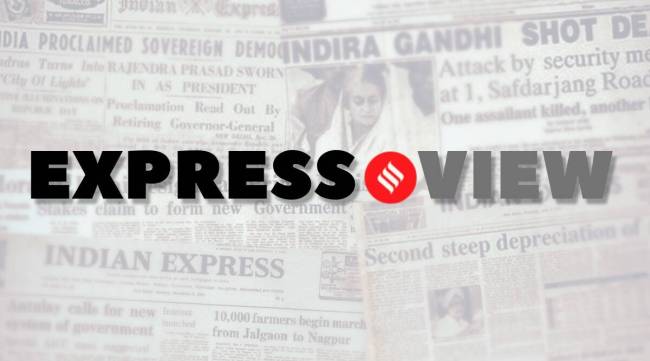Opinion Express View on death of Pervez Musharraf: He ran with the hares, hunted with the hounds
On terror, Pervez Musharraf played a double game. His country was singed, he himself was scorched by the blowback
 As Army chief and President, Pervez Musharraf was all-powerful, but his attempts to modernise Pakistan along Turkey's lines failed.
As Army chief and President, Pervez Musharraf was all-powerful, but his attempts to modernise Pakistan along Turkey's lines failed. Pervez Musharraf, Pakistan’s army chief who seized power from Nawaz Sharif in 1999 and ruled the country for the next nine years, believed like many generals before and after him that he had all the solutions to its problems. Within two years of installing himself as “chief executive”, the military dictator had to confront Pakistan’s serious systemic flaws, most of them the creation of his own organisation, the Pakistan Army, in collusion with religious extremists. At 9/11, given a tough choice between cooperating with the US or else, Musharraf chose the former, officially earning Pakistan the label of “major non-NATO ally”, a lucrative proposition that kept the economy afloat with the money that the US poured into Pakistan. Unofficially, he continued to run with the hares as he hunted with the hounds, turning over some alleged al Qaeda operatives on Pakistani soil to the Americans but tipping off targets of imminent drone attacks, and proscribing terrorist groups, only to turn a blind eye as they resurfaced under changed names.
The biggest con he pulled off was to keep the US guessing about Osama bin Laden’s whereabouts while the al Qaeda chief was in Pakistan. Still, for all this balancing act, he could not prevent the blowback that scorched Pakistan and him personally, in two assassination attempts by terrorist groups that believed he had sold out the country to the US. His attempt to clean out Islamist radicals who had taken control of the capital’s Lal Masjid in the summer of 2007 led to the formation of the Tehreek-e-Taliban Pakistan, and a backlash of terrorist attacks across the country. Weeks before her assassination for which the TTP claimed responsibility, Benazir Bhutto declared that Musharraf was plotting to have her killed. That allegation was to haunt him till the end. He was declared a fugitive in the case, while his 1999 coup would earn him a death sentence. As Army chief and President, he was all-powerful, but his attempts to modernise Pakistan along Turkey’s lines failed. Musharraf’s biggest achievement at home perhaps was to allow the media to flourish. His later attempts to muzzle it as it turned against him came to naught.
In India, despite his Kargil misadventure and his double-dealing on terrorism, Musharraf is remembered for the five years when India and Pakistan were most at peace, and for a much-discussed lost opportunity to resolve both Siachen and the Kashmir issue. The high point in the relationship was a landmark joint statement with Prime Minister Atal Bihari Vajpayee in 2004, that pledged that no terrorist acts against India would be launched from Pakistan or PoK, and agreed on a structured dialogue process. The 2003 ceasefire that set the stage for this statement will mark 20 years this year. His downfall began with the killing of the Baloch leader, Akbar Khan Bugti, and a failed attempt to sack the chief justice, and climaxed with his ignominious pre-emptive exit in 2008 ahead of a planned impeachment by a newly elected parliament. The Mumbai attacks that followed three months later should be a reminder to India that talking to a military dictator or an Army chief alone, hoping that other “stakeholders” will fall in line, is not a promising path to normalising relations with Pakistan.





